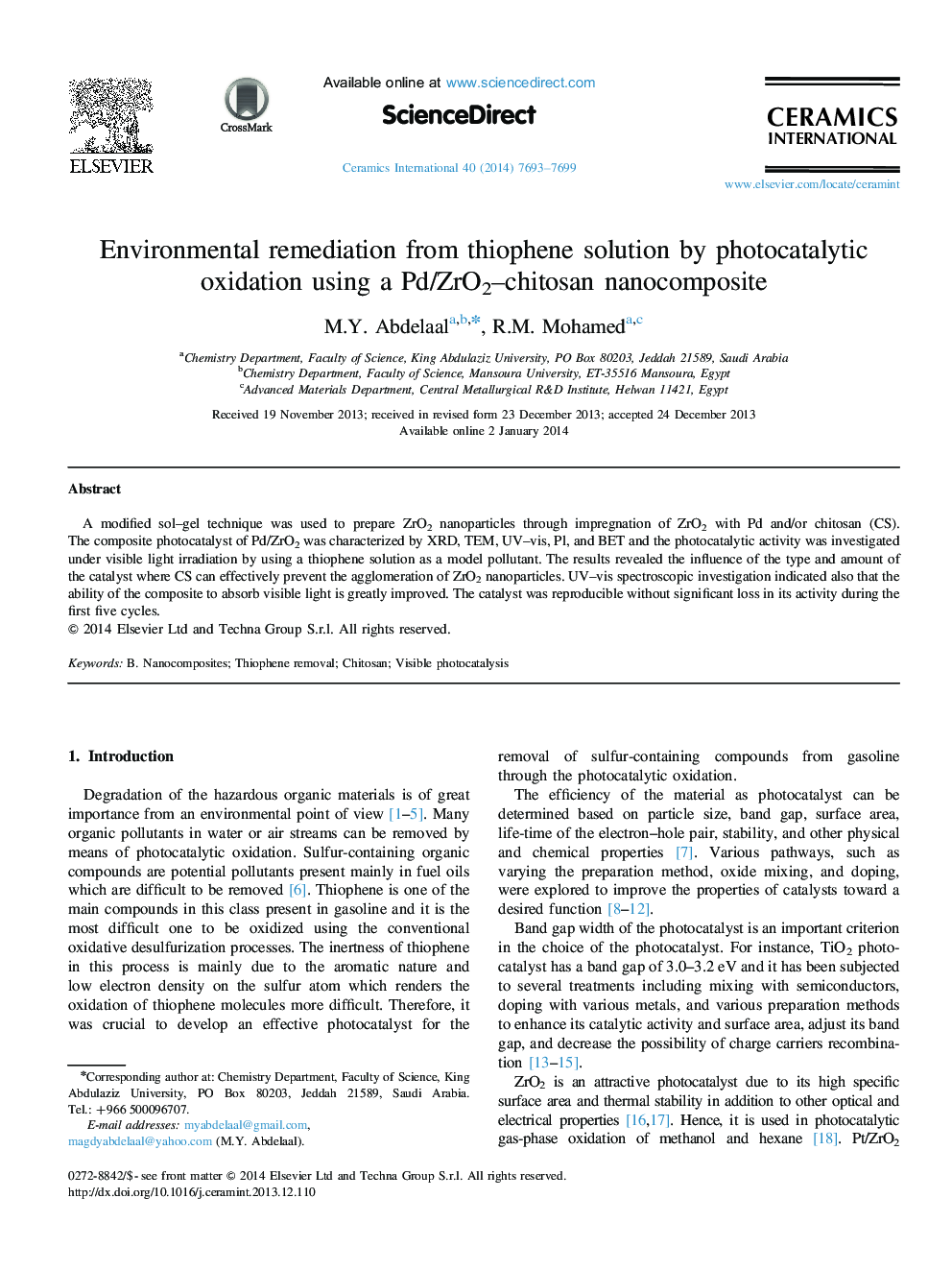| Article ID | Journal | Published Year | Pages | File Type |
|---|---|---|---|---|
| 1461502 | Ceramics International | 2014 | 7 Pages |
Abstract
A modified sol–gel technique was used to prepare ZrO2 nanoparticles through impregnation of ZrO2 with Pd and/or chitosan (CS). The composite photocatalyst of Pd/ZrO2 was characterized by XRD, TEM, UV–vis, Pl, and BET and the photocatalytic activity was investigated under visible light irradiation by using a thiophene solution as a model pollutant. The results revealed the influence of the type and amount of the catalyst where CS can effectively prevent the agglomeration of ZrO2 nanoparticles. UV–vis spectroscopic investigation indicated also that the ability of the composite to absorb visible light is greatly improved. The catalyst was reproducible without significant loss in its activity during the first five cycles.
Related Topics
Physical Sciences and Engineering
Materials Science
Ceramics and Composites
Authors
M.Y. Abdelaal, R.M. Mohamed,
